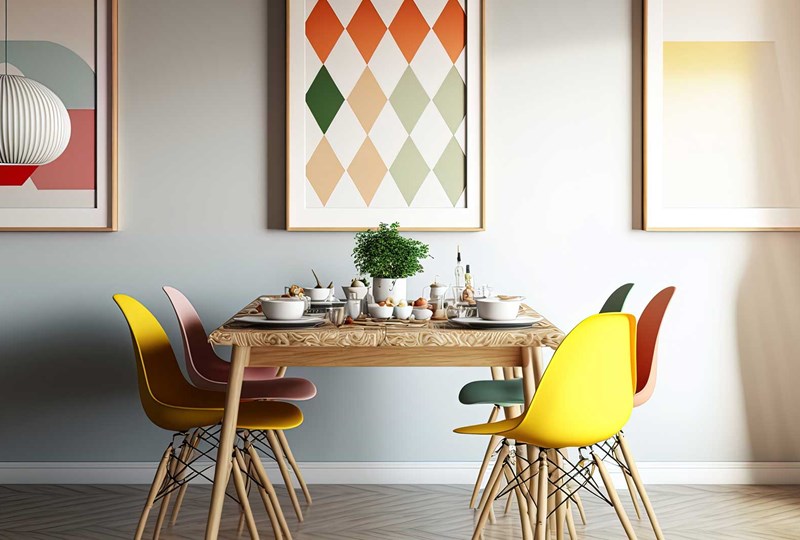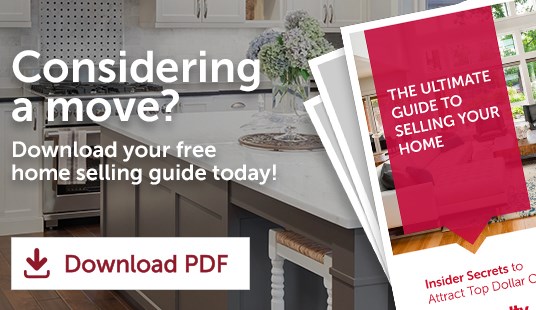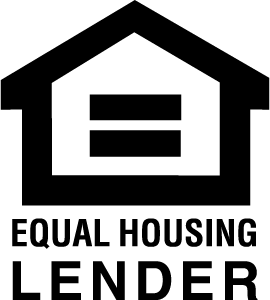
Key Insights
- From all-white and neutral decor to vibrant paint and full walls, design trends have majorly shifted in recent years.
- Combine your property’s history with your personal preferences to find an interior design style you love.
- Create a catalog of your favorite home features to inspire your home decor and design name.
Over the last few years, we have seen the interior design pendulum swing from extreme minimalism to extreme maximalism. While it can be fun to follow design accounts on social media, you may sometimes feel that your home’s style is outdated in comparison.
In reality, every homeowner needs to find a style that works for their budget, home and timeline. By developing your own style, you’ll be able to better decorate your home and create a cohesive style over time – rather than feeling pressured to start over every few years. Here’s how to find your home’s best design style.
Examine your home’s history
Uncovering your home’s history can be a source of inspiration when finding a design style specific to your property. To find what year your home was built, reference deeds and other official documents (you may find other interesting details about the property, too!).
If your home already has elements that give it a distinct look, you can play them up and build an overall design style around these features. Look to see if your home has any of the following:
- Built-in cabinetry or nooks
- Exposed brick
- Dark paneling
- Wall-to-wall carpeting
- Interesting doorways or archways
Draw inspiration from your personal style
After taking inventory of your home’s existing features, consider your personal style. You’ll want to get a sense of how you display your personality through clothes and other accessories. When getting to know your wardrobe and your personality better, ask yourself:
- Do I like to blend in or stand out?
- Do I prefer to feel calm or energized?
- Do I tend to take risks or stick to what I know and love?
- Do I typically enjoy time alone or with company?
At first, these questions may feel worlds away from home decor. However, understanding your answers will help guide your home’s design. For example, someone who is especially extroverted may lean toward a design style that prioritizes hosting guests, whereas someone who prefers a calm and relaxed vibe may incorporate cool colors and intentionally quiet spaces.
Determine what’s missing
Your home’s history and your personal preferences can combine to inform a fresh, unique design style for your space. However, you may find that even after melding these two aspects together, there are elements left to be desired. Now is the time to determine what’s still missing.
Look around your home to see what small changes could make a big impact in the direction you’d like to move. Contemplate the following:
- Have you updated your framed photos in the last decade?
- Do you wish you had more original art?
- Have you been waiting years to find the perfect sofa?
- Are there any family heirlooms sitting around in storage because you haven’t figured out how to incorporate them into your home?
- What could invite a greater sense of happiness to your space?
Catalog your favorite features in a design board
Whether you’re taking note of features your home already has or elements you hope to add into your space, including plants, create a list of what you love the most. For a more visual approach, take photos of each item that catches your eye – in your home or furniture stores – including:
- The color of walls, cabinets and rugs.
- Sideboards, armchairs and drawers.
- Decorative lamps and light fixtures.
- Fabric textures, metal finishes and unique materials.
After you’ve collected a series of photos that encompass your favorite design elements, create a bulletin board (or an online Pinterest Board) that includes your must-have items. Here, you can organize design features by the preference of need to buy, want to buy, want to keep and want to toss.
Make sure to spend time trying to spot what might not “fit” into the board, and why. In some cases, you may long for a gorgeous modern clock, but find that it doesn’t fit in with the rest of your home’s style. In other instances, you may realize that your desired design is cohesive and some simple adjustments can bring it to life. Maybe you’ll even be inspired by the color of the year.
Name your style
After you’ve decided what you do and don’t like, you need to put a name to your style. In fact, many wardrobe and design experts recommend that their clients create a name for their respective styles.
Why is naming your style helpful? Most of us don’t exist within only one style realm. Instead, we have a mix of things we love. Creating a made-up name that makes sense to you will help you remember your style each time you go to arrange your space or you pick up new furnishings. For example:
- Bohemian minimalist: You like to keep things light and airy, but with a touch of whimsy.
- Glam and modern: Your decor incorporates shiny frames, abstract paintings and funky furniture that are fit for Paisley Park.
- Eclectic earth: You enjoy a variety of home elements anchored by nature-inspired tones.
Moving forward with a new design
Still not entirely sure where to start? Consider taking an online style quiz to help you narrow down the home decor features you do and don’t like. And, read up on these design styles that are specific to home interiors:
If you’re moving forward with a new design to enjoy for years to come or to stage your home for sale, reach out to Edina Realty or your REALTOR® for extra guidance.









 ©2025 Prosperity Home Mortgage LLC®. (877) 275-1762. 3060 Williams Drive, Suite 600, Fairfax, VA 22031. All first mortgage products are provided by Prosperity Home Mortgage, LLC®. Not all mortgage products may be available in all areas. Not all borrowers will qualify. NMLS ID #75164 (For licensing information go to: NMLS Consumer Access at
©2025 Prosperity Home Mortgage LLC®. (877) 275-1762. 3060 Williams Drive, Suite 600, Fairfax, VA 22031. All first mortgage products are provided by Prosperity Home Mortgage, LLC®. Not all mortgage products may be available in all areas. Not all borrowers will qualify. NMLS ID #75164 (For licensing information go to: NMLS Consumer Access at